IMF Guide Released
It’s that time of year again when Ball Publishing, in conjunction with BASF, releases one of the best free resources of the year (in this case, for 2021—even GrowerTalks would like 2020 to be cancelled and move on to 2021). The Insecticide, Miticide & Fungicide Guide is an amazing resource, as it includes all chemistries available on the market (kudos to BASF for not hogging the product list).
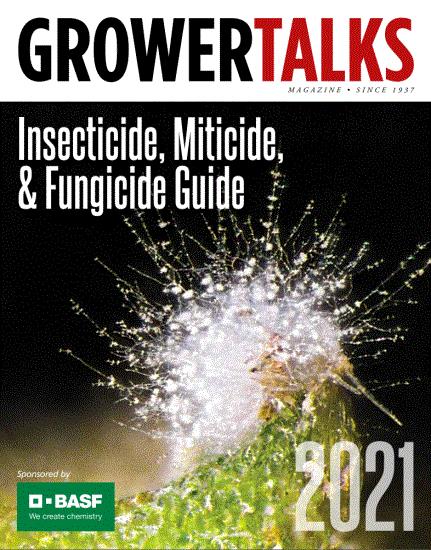
Even more, it contains science-based information in the form of articles from some of the best minds in the field. This includes Dr. Janna Beckerman (Purdue University), GrowerTalks' own Paul Pilon, Dr. Raymond Cloyd (Kansas State University), Dr. Chris Marble (University of Florida/IFAS), and others. It’s really amazing that each year this guide continues as a free resource for growers, students and Green Industry professionals.
Perennial Plant of the Year
Each year, the Perennial Plant Association (PPA) feverously debates the merits of a number of perennial plant species and even some cultivars of note. Their goal is to pick a winner, something that must be as hard as picking your favorite child (easy for me … it’s my dog Avage). Calamintha nepeta subsp. nepeta (calamint) was recently announced as the 2021 winner (I sense a trend in trying to forget about 2020).
In all seriousness, I think the PPA was spot on this year )and I also wonder if I'm a soothsayer?). They picked a proven performer that works in landscape situations across the world, even serving as a great annual in areas where it’s not cold-hardy. It also makes a great container or hanging basket plant, blooming well from mid-summer through fall.
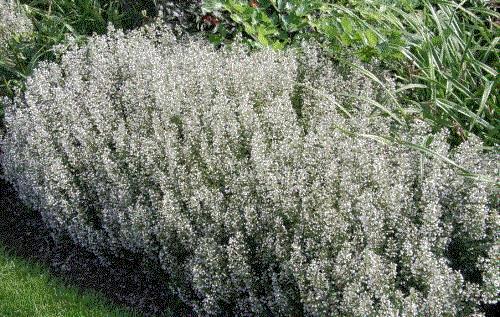
Back to landscape use, it looks good in mass-plantings or in a perennial border in Zones 5 to 9 (or as an annual farther north). It has a height of just under 2 ft. with a similar spread. Foliage has a pubescence that gives a soft appearance and that, when crushed, has a minty fragrance. In general, it prefers well-drained, sunny locations and it's moderately drought tolerant. If there's a kiss of death for this plant, it’s consistently wet soils, so avoid planting calamint in those spots.

Advocate PGR Hits the Market
It’s not too frequent that we see new plant growth regulator products hit the market, so it’s a big deal when two are released at the same time. Late last month, I received word that Fine Americas has introduced two new PGRs for the ornamentals industry that promote rooting and plant development early in the production cycle.
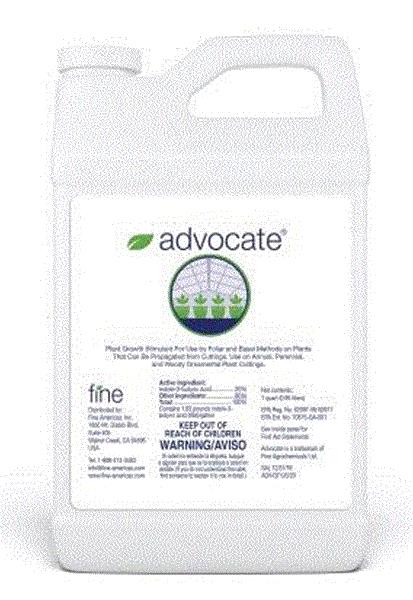
The first of these is Advocate, which helps propagate plants from cuttings. Utilizing the plant hormone IBA (indole butyric acid), Advocate stimulates root growth in plant cuttings, including hard-to-root perennial plant cuttings, softwood cuttings, woody ornamental cuttings, hardwood cuttings, pot rose cuttings, tropicals, etc.
Growers can also use Advocate to treat rooted plugs and seedlings at transplant, helping to reduce transplant shock and stimulate root growth in the finishing container. Growers can apply via total immersion, basal dip, basal end soak or foliar spray, allowing flexibility in their production systems. Growers can also tank mix Advocate with other products typically used in plant production—such as fertilizers, fungicides, insecticides, biostimulants and plant growth regulators—to improve plant health and early growth.

Crest PGR also Released
Interestingly, Fine Americas concurrently released a second PGR. Crest contains three PGRs (IBA, Kinetin and GA) in proper ratios to aid in early plant growth and development. In addition to its use for improving germination and development, Crest is also effective in establishing young plants for continued growth and development throughout the growing season. Apply it through watering programs or as foliar sprays/sprenches to reduce apical dominance and to promote bud differentiation, cell division, root induction and growth.
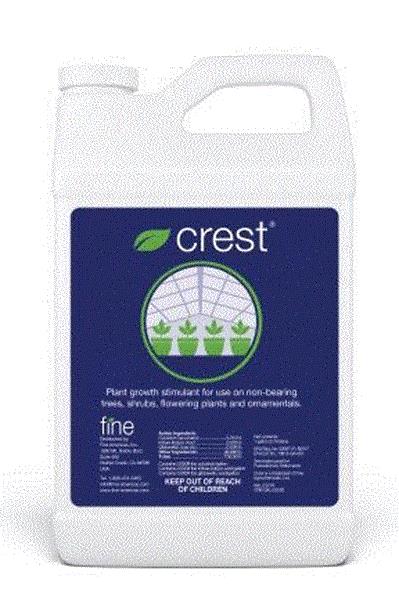
Crest also aids in seed germination and early seedling growth, stimulates growth in nursery and greenhouse cuttings, and helps transplants get a better start. In addition, Crest promotes plant growth and vigor in newly planted and established shrubs, non-bearing ornamental trees, flowering plants and ornamentals. Growers can also tank mix Crest and apply with fertilizers to improve early-season growth.
I'm personally interested in trialing Crest to improve first-year overwintering of woody stem cuttings. There are a lot of taxa, that while they root well, don't establish quick enough if bumped up from a propagation tray to a finishing pot in the same year. Maybe Crest could serve to push bud break and active growth in the finishing pot and reduce losses on things like native azaleas, some maples, blueberries and other species that just don’t want to break once rooted (in that first year).
I’ll let ya know next year if I see any positive effects on this eternally frustrating propagation issue ... I'm ordering some Crest ASAP.

Free Webinar: Greenhouse Maintenance & Environmental Control
With the winter heating season coming quickly, preventative maintenance is key to ensuring your operation is ready to face the harsh environmental conditions that could affect your greenhouse. Furthermore, getting ahead of potential issues with your heating, ventilation, curtain and other environmental control systems can avoid costly equipment failures. That's why we're hosting a free webinar in conjunction with Argus Controls, titled "Preventative Maintenance and Environmental Controls in the Greenhouse."
It's slated for this Friday, September 18 at 1:00 p.m. Eastern/Noon Central time. Sign up at www.growertalks.com/webinars.
In this panel-style webinar, you'll see how an environmental control computer can help you in this process. In addition, you’ll learn how automated environmental control systems can help optimize your equipment to make your processes as consistent and efficient as possible.
The three experts will tell you:
-
The importance of risk management and planning ahead in the greenhouse for extreme weather seasons/conditions
-
The relevance of understanding the equipment in your facility to make the most out of it
-
The impact and benefits of preventative maintenance in your greenhouse
-
The best time to perform a system audit
-
How can having an environmental control can help with preventative maintenance and system audits

Rico, Joan and Brad—our expert panel.
The guest experts are Joan Leonard, Technical Specialist with Consolidated Greenhouse Solutions; Brad Wolf, CEO of Green Valley Greenhouse; and Rico Garay, Key Account Manager with Argus Controls.

Little Missy Boxwood
I wanted to mention the named cultivar that proved the most resistant based on the results presented in "Ranking Resistance of Buxus Cultivars to Boxwood Blight—an Integrated Analysis." The cultivar is Little Missy, which is a 2013 Star Roses & Plants introduction.
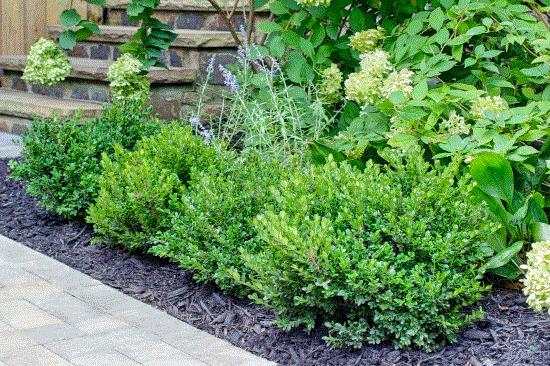
Discovered by nurseryman Norman Cole, Buxus Little Missy is a reliable selection for its excellent landscape value, as it's very low maintenance. It also makes a good container plant, as it's a slower growing cultivar that doesn’t rapidly outgrow a container or crowd out other plants in a mixed container.
Little Missy is indeed a compact plant that grows to 2.5-ft. high by 3.5-ft. wide. It displays deep green foliage year-round and is hardy in Zones 5 to 9. As with most boxwoods, you'll want to avoid planting in consistently wet soils, but otherwise this cultivar is pretty solid in the landscape.
COVID Impacts on the Green Industry
We've all felt it; COVID-19 has changed the way we do everything, from grocery shopping to how we conduct business. It can be difficult to judge the impact, especially on an entire industry as diverse as ours.
In walks Dr. Julie Campbell, an Assistant Research Scientist at the University of Georgia (UGA), who collaborated with University of Tennessee’s Dr. Alicia Rihn and UGA's Dr. Ben Campbell on two projects that address the impact of COVID-19.
The first measures the impact of the novel coronavirus on the Green Industry across the Southeast (although I think the trends observed are nationally felt). The second addresses the purchasing habits of Green Industry consumers prior to and during COVID-19 shutdowns. What makes this really interesting is that it's one of the first large surveys of COVID consumer behavior specific to our industry. It also evaluates the trends as we moved through the pandemic to this point.
The overall impact of the pandemic seemed to be that our industry experienced an increase in sales due to shelter-in-place orders and the closing of non-essential businesses (except in states where we were deemed a non-essential business—see Michigan). The purchasing habits of consumers aren't as simple to evaluate, but this important research opens a window into some interesting trends. This should, if spring 2021 mirrors spring 2020 (please—can this just end before then), give us all a better understanding on how to market to consumers in a pandemic.

Our Wacky Wonderful World—Notes from the Edge of Sanity
I love seeing good people recognized for their work and a friend to many in the Green Industry was honored last week with the North Carolina Governor’s highest honor, the Order of the Long Leaf Pine. Dennis Niemeyer is an example of what we should all strive to be, in that he's promoted the Green Industry his entire career, which started in 1978 as Field Nursery Manager at Studebaker Nurseries (Carlisle, Ohio) and continues today at Bailey Nurseries. He's (in his spare time) served in a number of roles related to native plant conservation and use in landscapes across the U.S. (and beyond).
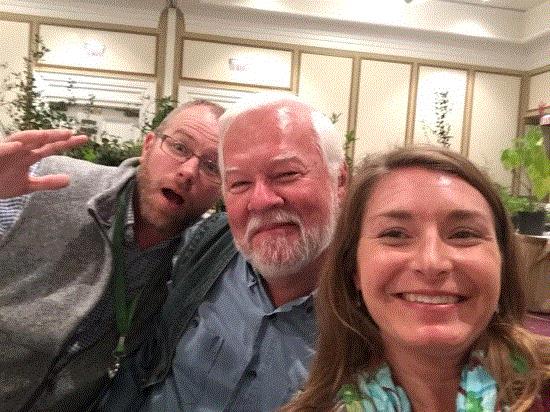
Dennis (center) is not related to Kenny Rogers, but he does give autographs upon request.
I met Dennis through the International Plant Propagator’s Society (Southern Region of North America) as a PhD student and quickly recognized him as a leading expert on native species (especially woodies), not only in the Southern U.S., but really across North America. In fact, many breeding programs have a native focus directly related to Dennis’ efforts to promote the use of native species in managed landscapes.
But what really sets Dennis apart is the fact that, while holding a full-time job, he somehow found the time to serve on boards and committees of industry associations, traveled to educate via giving presentations at a huge number of events and took the time to assist anyone who needed it. And he always did so with a smile.
That’s the kind of service-oriented mindset we need these days and I appreciate Dennis leading by example.

Live authentic,

Matthew Chappell
Editor-at-Large
Nursery & Landscape Insider
This has been received by 27,837 of the hardest-working horticulturists in show business!
If you're interested in reaching 27,837 (and growing) clients who eagerly await every Nursery & Landscape Insider and surely read every word, contact Kim Brown ASAP and she'll hook you up.